I’ve been looking into a security system for my home, but I keep running into the cost issue of a monthly service charge. So, I took a different tack and decided to cobble together my own using off the shelf network cameras. I had several cameras arrayed around the house, but I was missing a weather proof outdoor camera that could “see” in the dark. Now that I have the D-Link Outdoor HD Wireless Network Camera DCS-2330L, I might be able to get complete coverage of my property.I’m familiar with D-Link cameras and the myDlink portal and mobile app, having used them for several years. At one time I was monitoring a house 150 miles away with no problems. What led me to the D-Link line was initially the price and after using the camera for a while, I appreciated the flexibility to adjust the parameters to suit my needs.
Specifications:
Hardware Profile
- 1/4” Megapixel progressive CMOS sensor
- 5 meter IR illumination distance
- Minimum illumination: 0 lux with IR LED on
- Built-in Infrared-Cut Removable (ICR) Filter module
- Built-in PIR sensor (5 meter)
- Built-in microphone
- 10x digital zoom
- Focal length: 3.45 mm
- Aperture: F2.0
Camera Housing
- IP65 compliant weatherproof housing
Image Features
- Configurable image size, quality, frame rate, and bit rate
- Time stamp and text overlays
- Configurable motion detection windows
- Configurable privacy mask zones
- Configurable shutter speed, brightness, saturation,contrast, and sharpness
Video Compression
- H.264/MPEG-4/MJPEG simultaneous format compression
- JPEG for still images
Video Resolution
- 16:9 – 1280 x 720, 800 x 450, 640 x 360, 480 x 270, 320 x 176 up to 30 fps recording
- 4:3 – 1024 x 768, 800 x 600, 640 x 480, 480 x 360, 320 x 240 up to 30 fps recording
Audio Support
- G.726
- G.711
Power
- 5 V DC, 1.2 A through external power adapter
- External Power Adapter Input:100 to 240 V AC, 50/60 Hz
Max. Power Consumption
- 5.5 watts max.
Operating Temperature
- -13° to 113° F (-25° to 45° C)
Operating Humidity
- 20% to 80% non-condensing
Dimensions
- 2.6” x 5.53” x 3.66” (66mm x 140.5mm x 93mm)
Weight
- 8.99oz (255 grams)
On the front of the camera there is the lens, microphone, light sensor, IR LED and power status LED.
The backside is where the power cable enters and there is a port under the weatherproof cover for an Ethernet cable.
You can see the Ethernet port with the cover removed.
The camera is attached to the mounting bracket. Thankfully, the bracket is made from metal and not all plastic like my other DCS-930 cameras, which break very easily.
Here I’ve removed the weatherproof covers, giving me access to the connectors and microSD slot. This is something you won’t want to do when the camera is mounted outside, so plan well. For example, decide what size microSD card you want and install it. Notice that the screws have weatherproof coverings.
I put in a 2GB microSD card. For illustration purposes it’s halfway inserted. The black hole on the left houses the reset button.
If you have a D-Link cloud router the setup is super simple and can be done using a wireless connection. For the rest of us it’s not much harder, but does require a hardwired Ethernet connection. To begin, you’re directed to download the setup wizard and follow the directions on the screen.
The wizard will tell you when to connect the Ethernet cable and power.
The setup will discover the camera on your LAN.
At some point the setup routine will ask you to sign up or log in to your mydlink account. Although it’s optional, the mydlink service makes it very easy to access your camera(s) both locally and remotely. One downside of the mydlink service is that all your video will pass through D-Link’s servers. I find the convenience factor worth it, but I also insure that my cameras don’t cover any “sensitive” areas.
At this point in the setup you can designate a wireless network for access to the camera.
And now we’re done. Unplug the Ethernet cable and power cable and position the camera where you want that has mains power available for the camera. Although the title of this review includes the word wireless, it’s really not the case. In fairness, this is the same for all “wireless” remote cameras I’ve seen. The gating item for positioning the camera is power availability.
I am very fortunate, because I was able to locate the camera with a view down my driveway and the shed where I mounted it, has a power outlet.
It only took about 15 minutes and 2 screws (supplied) to install.
There are multiple ways to access and manipulate the DCS-2330L and other D-Link cameras: direct access to the camera via the built-in web server; using the mydlink web account; mobile access using iOS and Android apps; and the D-ViewCam Windows application, which is the most comprehensive, but as the manual has 166 pages, it takes some time to figure out.
Using the camera’s built-in web server gets you to the low-level aspects of the hardware. To access it, you’ll need to know its ip address on your LAN.
The first screen of the device web server provides a live camera view. On this page you can record a video, take a snapshot, mute the sound and change the picture size and resolution.
The most interesting tab is setup, where you can customize the camera to your needs. Here I’m setting the area on the picture that will trigger an event if someone/something enters it.
Here I’ve setup what to do if there is motion detected. In this case I will get an email notifying me that there is an intrusion and the camera will record video to the on board microSD card. I could have set an event based upon sound or a trigger of the passive infrared (PIR) detector. As you can see on the left side of the page, there are many items that can be adjusted and tuned for your situation. All this works well if your computer is on the same LAN as the camera, but for remote access you’ll have to get a Dynamic DNS service to account for the changing of ip addresses from your DHCP server. One issue I had with the camera’s web access was that I could only get it to work with IE version 9. D-Link states that it will work with IE, Firefox and Chrome, but I found that when using Chrome, several tabs on the left of the setup page were missing and when using IE 10, I couldn’t record videos or take snapshots. Everything worked well on a Vista system using IE 9.
If you need remote access or don’t want to fool with all the parameters of the camera, the mydlink service is the way to go. It puts a simple user interface on the complicated parts of the camera.
In my case, I have registered 4 cameras and using mydlink, can look at them one at a time. On the live view page the image can be manipulated to some extent and the sound turned on/off.
In HD mode and selecting full screen, gives a very good quality image.
The low light capability of the camera is exceptional. Besides that, there is an infrared light source that will illuminate the scene for up to 15 feet in total darkness.
Motion detection and recording can be set from the portal. It is also possible to access the camera’s web server from the mydlink account and this can be done either locally or remotely.
There is a free iOS app that allows you to view your cameras remotely and change some settings using the app. Of course the resolution is dependent upon your phone or tablet.
For a little money I upgraded my app to the plus version, which displays multiple cameras on the screen.
For a comprehensive surveillance system, D-Link provides D-ViewCam software for free. This allows you to monitor and manipulate up to 32 cameras. It provides scheduled and event-driven video recordings that can be stored and searched at a later date. With D-ViewCam you have a full-fledged surveillance system. I’m still learning how to use it, but it’s not necessary if all you want is casual monitoring of your premises.
The DCS-2330L network camera from D-Link is a good starting point to build your home monitoring system. Add a couple of the less expensive indoor cameras and get a mydlink account and you can watch your house when you’re not at home. All the cameras I have also send alarms if they detect motion, so they double as an alarm system. For less than $250 I have put together a video monitoring/alarm system and I don’t have to pay a monthly fee!

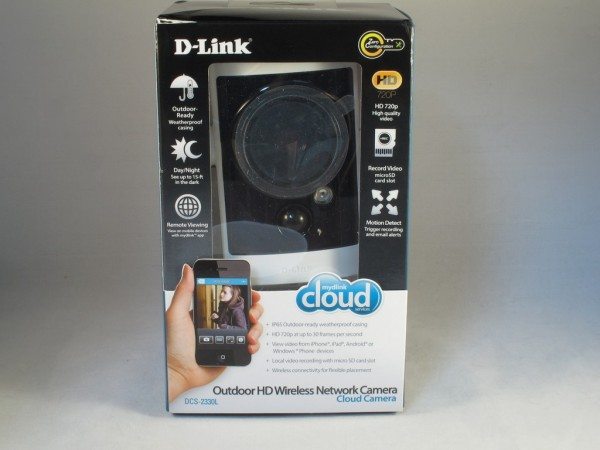
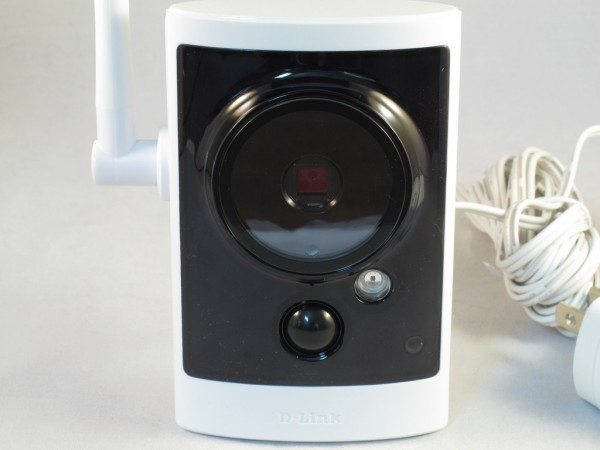
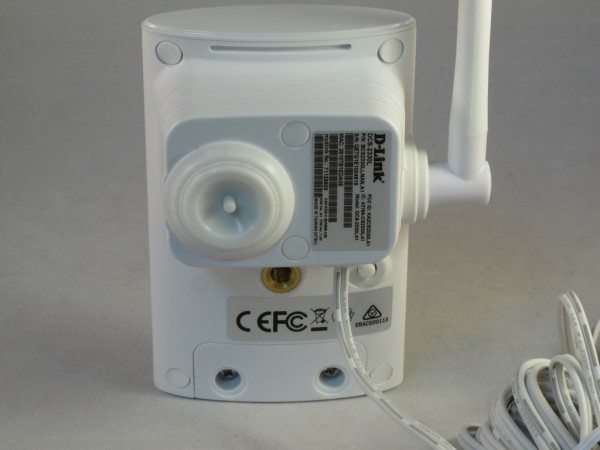
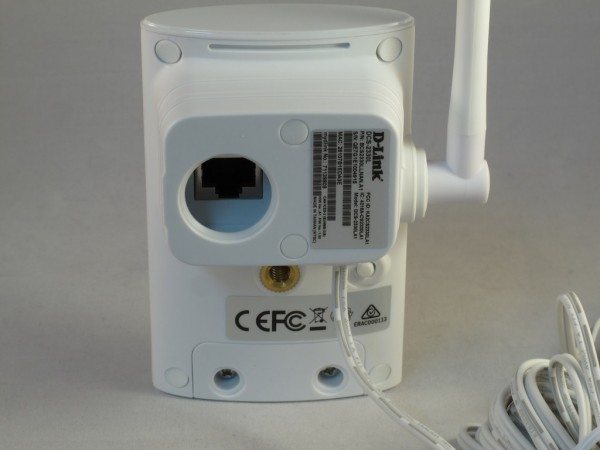
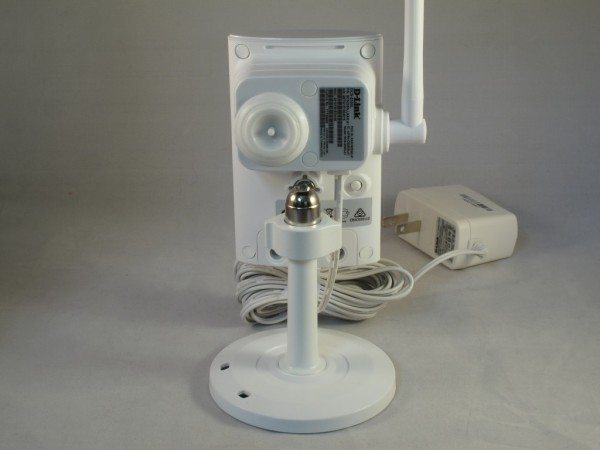
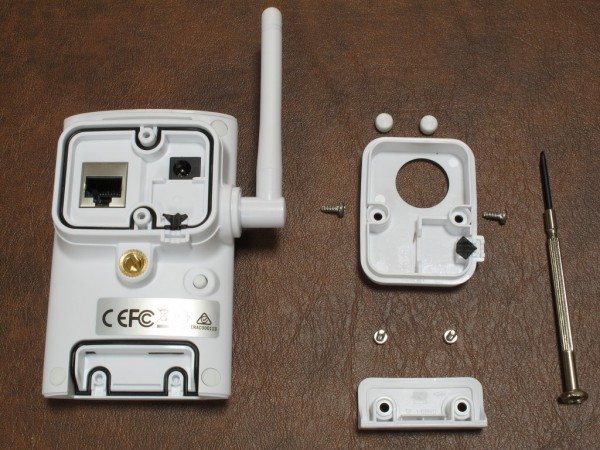
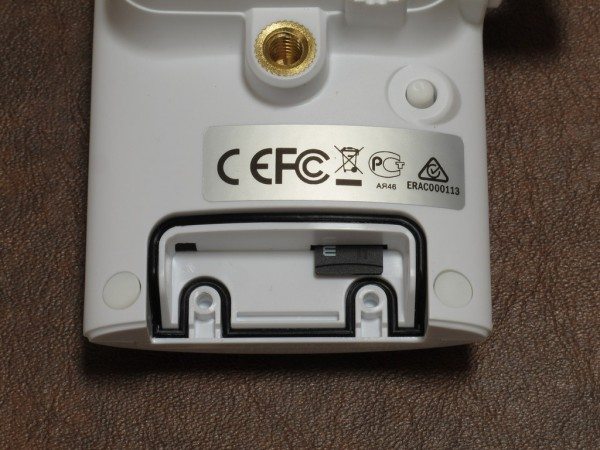
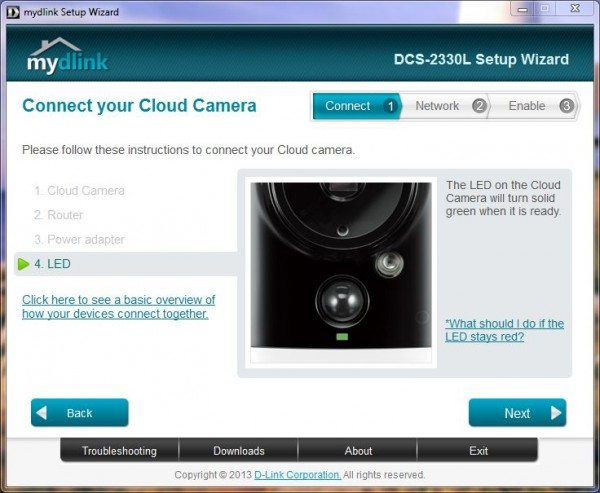
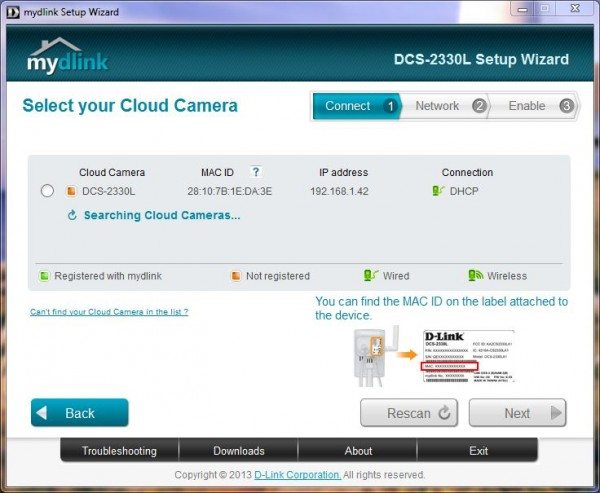
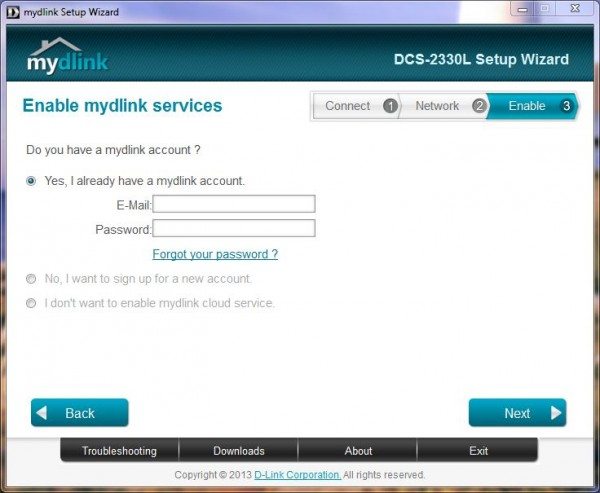
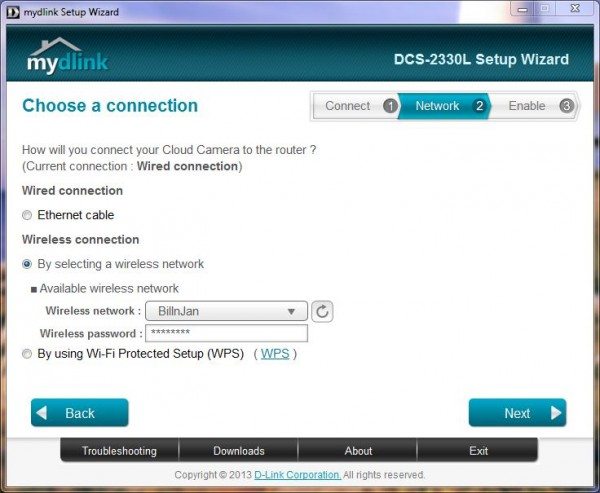
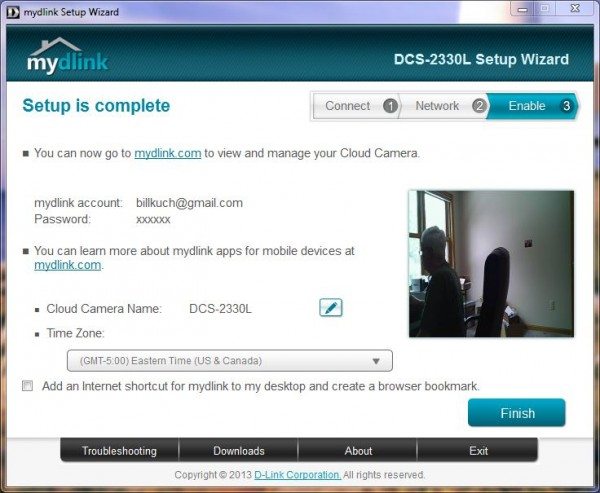
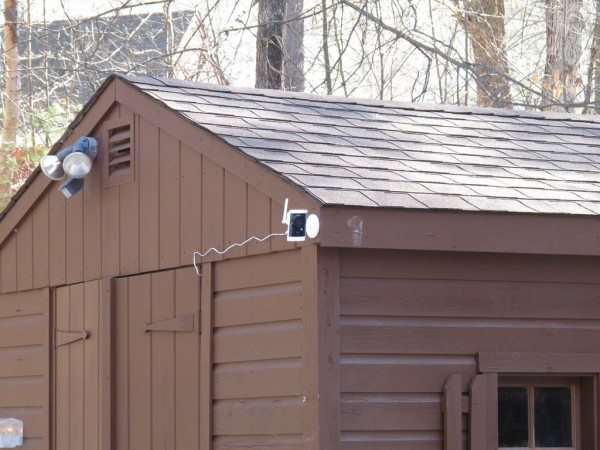
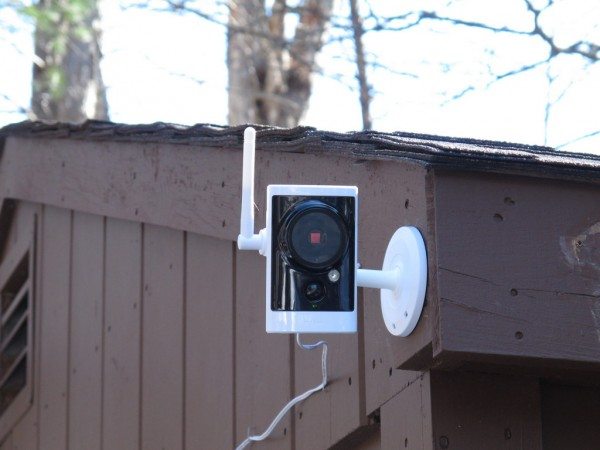
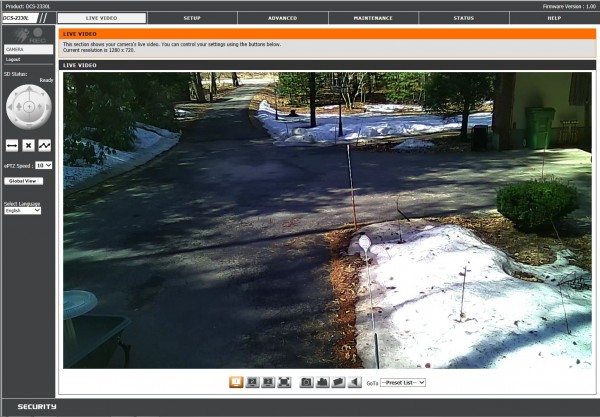
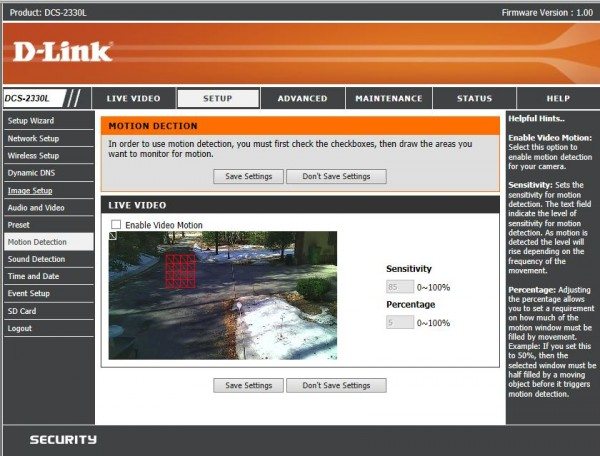
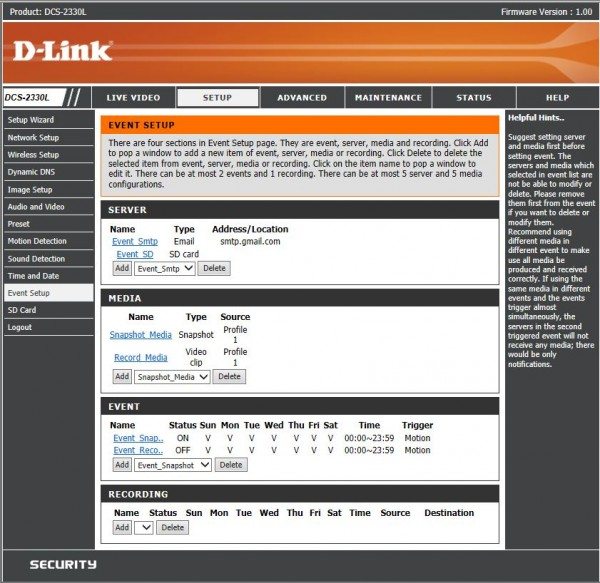
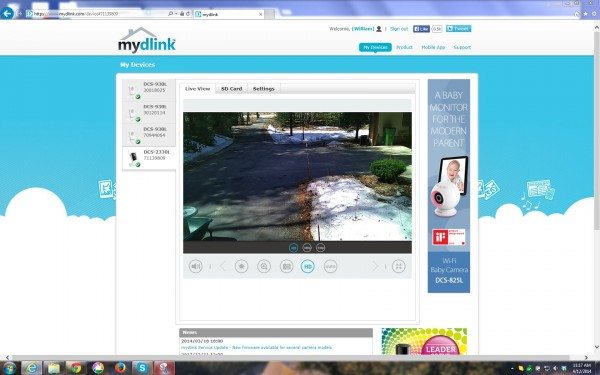
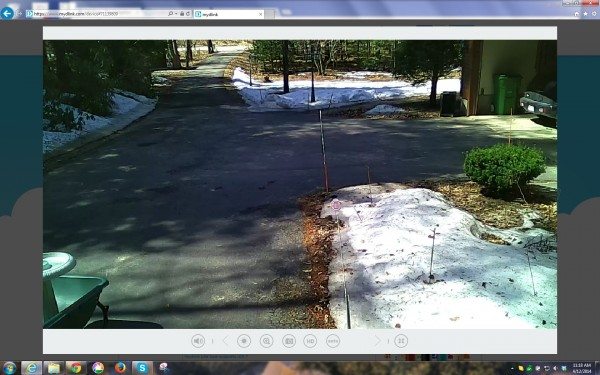
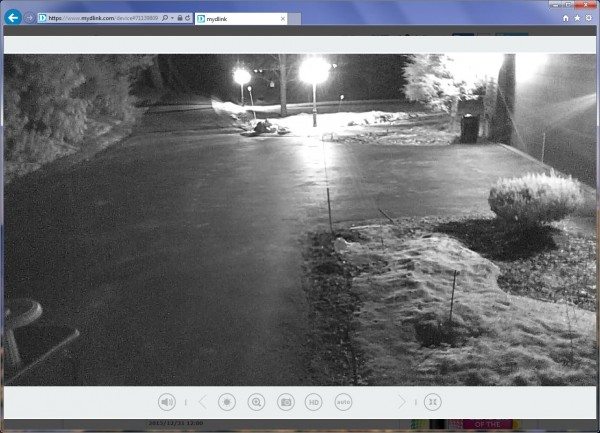
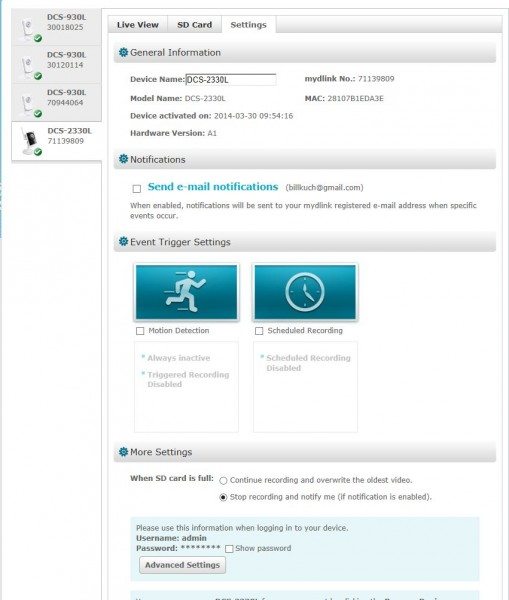
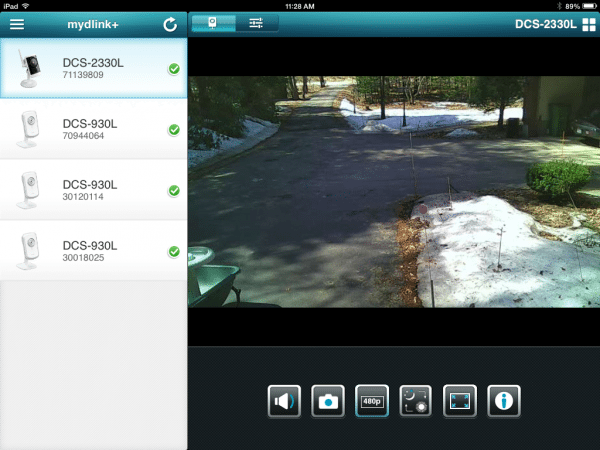
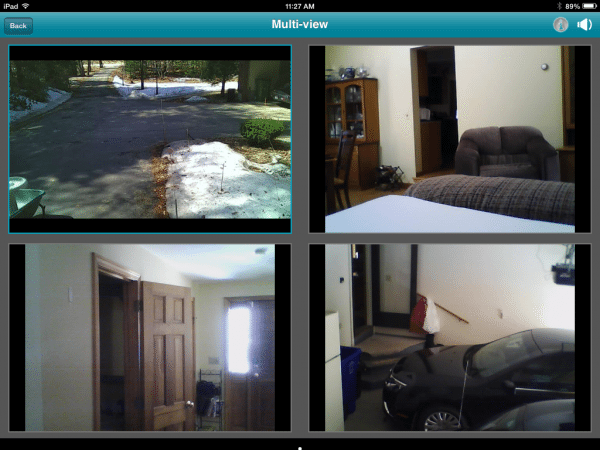
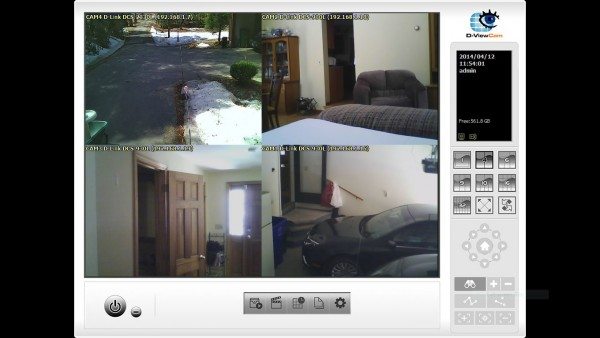

![[Solar Panel] Battery powered with solar panel, this camera stays charged continuously. Enjoy hassle-free, uninterrupted monitoring [Motion Detection] The camera records and saves video clips only when motion is detected, saving storage and extending...](https://m.media-amazon.com/images/I/41xBfCmgxaL._SL160_.jpg)
Gadgeteer Comment Policy - Please read before commenting
Does this device allow motion detection alerts to a mobile device? or is that a fee based service as most others offer?
tivoboy,
There are no fees. If your mobile device can receive email, you will get alerts.
I can’t figure out where the setting is for the length of time the video runs.
Do you have any idea where this Is?
Thanks Leona
Hi Leona,
The default length of time for a video recording is a maximum of 60 seconds. This can be changed by using advanced mode via the MyDlink application. After getting connected to the camera, go to the event setup tab and under video clip the time and maximum file size can be adjusted.
BILL, thank you so much for the info on changing video length!! It’s not obvious, and it’s not talked about much on-line. I was going nuts. Much appreciated!
Jenn,
You are welcome!
Just bought one myself but keep having problems with the camera going offline. I’m not sure if this is related to the wifi signal strength. The only way I can rectify is to power down and restart. Do you have the same issue? How far is your camera from your router?
Simon,
My camera is ~75 feet away from my WiFi router. The signal has to propagate through an outside wall before it reaches the camera. So far, I’ve had no problems with it going offline. It’s been working great since the review. I suggest you move it closer to see if it is the signal strength and if it is, you may want to invest in a newer router/access point. My router is a Netgear WNDR4300.
Thanks Bill,
I suspect the issue is my router which is about 4 years old and so needs upgrading. Rep at Bestbuy says cameras need a decent router. Do you have any recommendations on good wireless router?
Simon,
There are a lot of good routers out there. The Netgear WNDR4300 works for me.
You might want to consider getting a repeater or an amplifier if it’s far off.
Finally figured out the problem. I was trying to use sensr.net as an FTP site to upload images. For whatever reason this was causing my DCS 2330L to keep going off line. I ended up just buying a micro SD card for the camera instead and it’s recoding motion activated events to the SD card now. I did upgrade my router as well to an Apple Airport Express which works fine, but I don’t think the router was the issue.
Hi Bill, your explanation is very helpful!
Is there a way to download on the PC the videos stored in the SD of the remote camera?
Through MyDlink I can only watch them…
Thank you in advance!
Walter,
If you go to the builtin webpage of the camera and the setup tab and then the SD card tab, you can download the videos.
I installed the camera outside my home, about 15 feet above the ground.
It’s not easily accessible. In addition, I had to drill a hole 1/4″ to allow the power cord to be threaded through. (I had to cut it and re-splice it in order
to get to the power source). The big problem is that D-link has updates that it applies to the camera, which requires that it be connected directly to the router. This entails re-cutting the cord, climbing a ladder to reach the camera, re-attaching/splicing the power cord running the update, then
again, cutting the cord, climbing the ladder, threading the cord, re-attaching
it…etc.
If only they had made the connection to the camera a removable plug all of the above would have been a lot simpler.
Also, if the connection fails, as it sometimes does, Dlink says to reset the camera and connect it to the router and re-install the software.
Steve in CT.
Steve,
I have been doing the updates over WiFi without any issues. However, you are correct about the connection failing a lot. If I cycle the power, the problem goes away for awhile. I’m impressed that you’ve been able to connect with Dlink support. I’ve found them less than responsive and because of this, no longer purchase their products.
Bill,
I have’t tried doing the software update via a wireless connection.
One reason, the hasn’t been able to connect to my network for the
past three days! If I could return it, I would, but since I spliced the power cord
I doubt they would allow the return.
I will not buy their product in the future, that’s a given.
Could you please tell me what is the length of the 5 V DC, 1.2 A, External Power Adapter cord, thanx.
Constance,
Approximately 9 feet.
I purchased one and it will not record and/or send me video clips. I also have a 942L which works just fine. After 8 hrs w tech support still nothing. Now sitting on hold for over 10 minutes when I phoned the warranty number. Pretty bummed w this device so far.
Hi, could you please tell me the what are the available values or fps, it only says up to 30 fps, but I need to know if 1 or 7 fps are available.
Sorry for the english.
Thanks in advance